Physical Address
304 North Cardinal St.
Dorchester Center, MA 02124
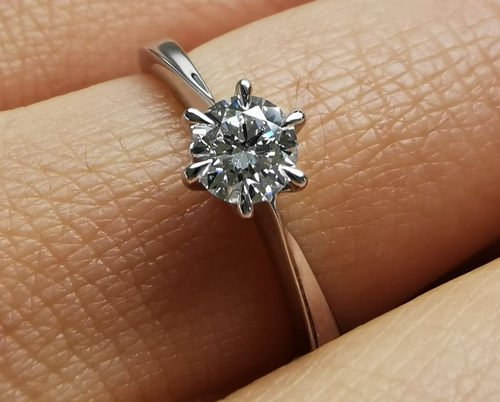
Are you looking for something different for your engagement ring, but also something that best matches and brings out the best of your features? Perhaps something a little subtle, safe on your skin, and easy to accessorize/ dress up? How about a white gold engagement ring? You could choose between 14K and the 18K white gold engagement ring, two of the best options for a white gold engagement ring.
In addition to being the trendiest choice on the fashion scene today and also being an excellent alternative to platinum, white gold oozes timeless beauty, and the best part is that diamond and other gemstones can be set on white gold jewelry seamlessly. It’s also quite beautiful and elegant, which leaves you with one question – which one should you buy – the 14K or the 18K engagement ring?
Well, as confusing as it may look, the choice between 14K and 18K white gold is made easier when you understand the elements and the feature of either gold alloy. Meaning that you can easily pick one over the other once you have the facts. And that is where we come in; in this article, we’ll take you through everything you need to know about white gold jewelry, the differences between 14k and 18k white gold engagement rings, and most importantly, which of the two you should pick.
So, let’s get started!
Before we specify what 14K white gold is made of and how it comes to be, it’s worth noting that white gold is made from pure 24k brilliant yellow gold, which is 99.99% pure gold. To create white gold, a percentage of the pure yellow 24k gold is alloyed with other metals, often white metals, which results in a version of gold that is more white than yellow.
This mixing of metals is called alloying. What you should know about alloying is that the process isn’t just about creating a different-colored version of gold but enhancing the durability of gold. Pure gold is quite soft, and though it can be molded into jewelry, its softness makes it susceptible to bending, scratching, and general deformations. Alloying remedies this; in the process, it creates different types of gold.

So, what is 14k white gold?
White gold was initially developed to imitate platinum, the other precious metal that is quite pricey. This gold alloy is created when pure 24k yellow gold is mixed with durable and strong white or silvery-white metals such as silver and palladium. As mentioned above, this mixing of metals is meant to increase the strength and durability of the gold.
After the gold is alloyed, the resultant gold alloy isn’t quite white or as white as you expect of white gold. The silvery-white metal alloys used only help in creating that desired white color, but alloying is not the white step in creating white gold. To further enhance the durability, strength and to give white gold that lustrous white sheen on the surface, the resultant white gold is coated with rhodium through rhodium-plating. Rhodium belongs in the same metal family as platinum, meaning you get the same whiteness in white gold that you’d get from platinum rings.
14k white gold – in the alloying process, different types of white gold would come to be based on the percentage of gold and the metal alloys used. For 14K white gold, the jewelers mix 58.3% pure gold with 41.7% white metals. These differences in metal contents leave you with gold that looks whiter than yellow, a lot more durable, and strong. After electroplating with rhodium, you have a glistening version of white gold that is largely protected from oxidation, glistens, and calls for minimal maintenance.
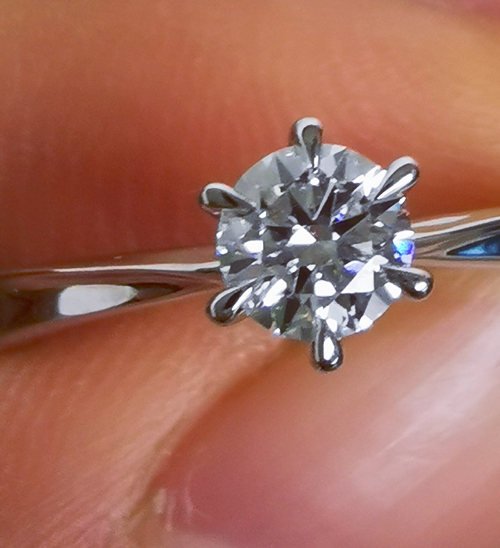
Pros
Cons
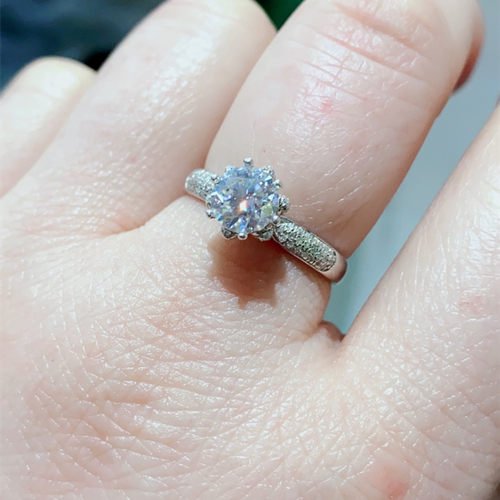
18K white gold is made in the same way as 14k white gold, but the difference between the two lies in the composition of gold in the gold alloys. 18K white is more valuable than 14K yellow gold because it’s made of 75% pure gold (18 parts), and the white metal added to it only makes up 25% (6 parts). The differences in composition make 18k white gold more valuable.
Both 14k and 18k white gold are. However, rhodium plated for the lustrous white sheen. Without the plating, what you have is really a yellowish-white gold. The good news is that your 18k white gold engagement ring will look just as good as platinum and any other expensive white metal.
Pros
Cons
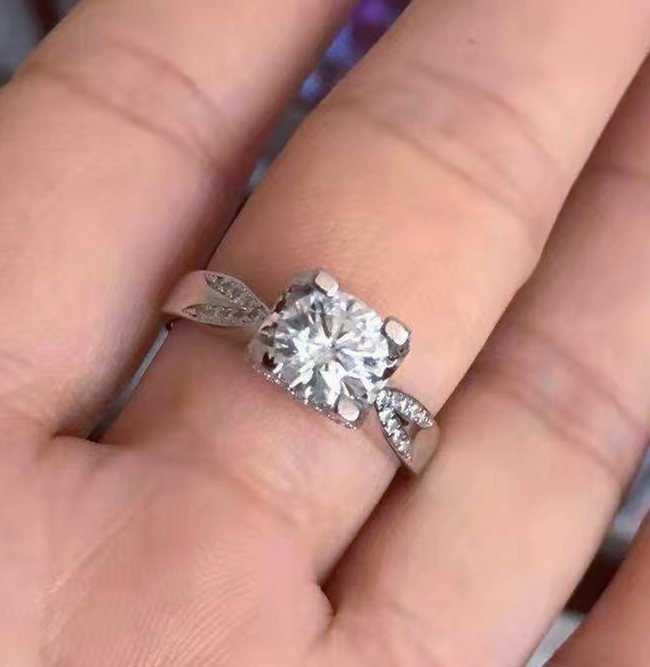
Technically, 14k white gold is more durable and has a higher level of hardness than 18k white gold because its creation involves the use of a higher percentage of high-strength white metals bonded to pure gold. This, in addition to the rhodium plating, means that the 14k white gold ring will last longer compared to 18k. The hardness and strength of 14k white gold make it less susceptible to scratches and bends.
18K white gold, on the other hand, is durable, but the high gold content means it’s a lot more delicate. Interestingly, 18k white gold is a preferred choice when it comes to diamond setting, with most jewelers choosing 18k white gold for the most elegant diamond engagement rings over 14k white gold. The reason for this is that the 18k white gold looks and feels a lot more luxurious, and the diamonds pop perfectly when set on 18k white gold.
That said, the layer of rhodium over 14k and 18k white gold mean that both these versions of gold come with an extra layer of protection, and the difference in durability between the two materials is minimal.
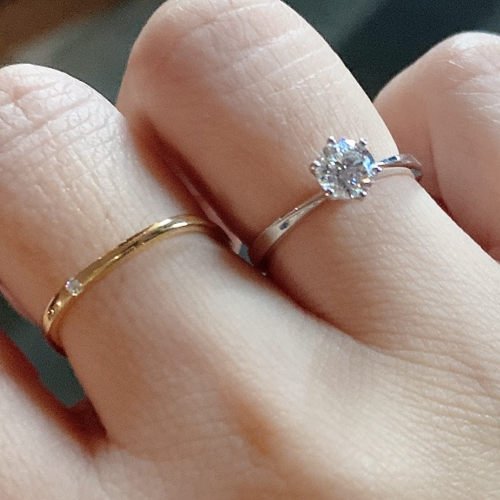
Before rhodium plating, you will notice that 14k and 18k white gold don’t look too different from each other. Since both 14k and 18k white gold are rhodium plated in the last step of production, they are identical, and your decision to choose one over the other wouldn’t be based on their outward appearance.
However, the higher content of gold in 18k gold means that it has more of a yellow hue compared to 14k, which has less of the pure gold. In other words, 18k gold is purer than 14k white gold. This also means that the 14k white gold is more likely to have nickel alloys which results in nickel allergies. If you have sensitive skin, you may want to spend more on the 18k white gold that is often free of nickel alloys or contains negligible amounts of nickel alloys, hence a lower risk of allergies.
18k white gold is inherently more valuable than 14k white gold because of the high content of pure gold, and this makes 18k white gold engagement rings more expensive than the 14k white gold engagement rings,
If you lead an active lifestyle and you are always working with your hands, you’d have to make your choice based on the sustainability and the durability of the ring, which means that you’d be better off with the 14k white gold ring that doesn’t bend easily rather than the 18k white gold that would bend and scratch easily. However, if you don’t work hard on your hands or wouldn’t be wearing the engagement ring everywhere, then 18k white gold would still be an excellent choice for you.
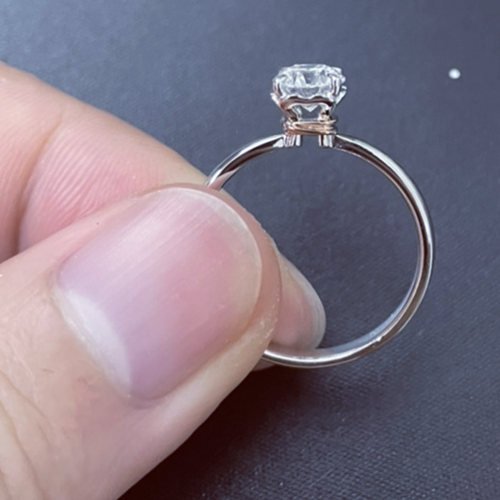
As mentioned above, both the 14k and 18k white gold engagement rings will look the same, which means choosing between them isn’t influenced by the color or the overall outward appearance but by other factors like price and durability. 18k white gold engagement rings cost more, and they might not be as hard as 14k, but they allow for the best diamond settings, which make them a preferred engagement ring choice for most people and even jewelers.
You could choose either 14k or 18k white gold engagement rings. But if you are going for something durable and slightly affordable, 14k would be a better choice.
Just keep in mind that whether you choose 14k or 18k, the price differences are further influenced by the quality of the diamonds set on the white gold band, the type of setting, the overall style of the ring, and the jeweler you get the ring from.